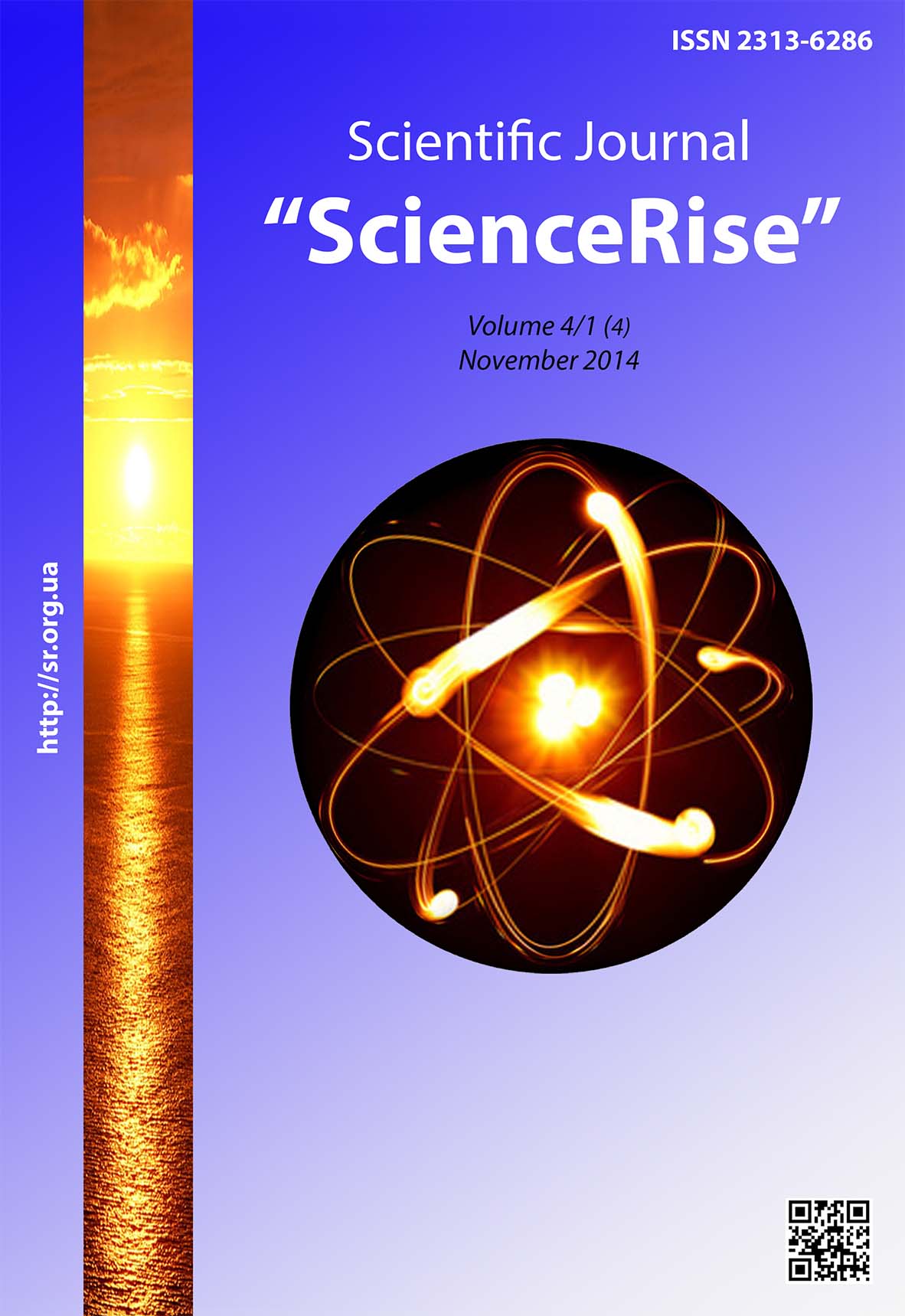Modes of physical activity for 50-65 years old teachers of higher educational establishments
DOI:
https://doi.org/10.15587/2313-8416.2014.28404Keywords:
physical activity, physical load, 50-65 years old teachersAbstract
The purpose of the article is grounding of the rational modes of physical activity for 50-65 years old teacher with the risk of cardiovascular disease. The rational modes of physical activity are represented for 50–65 years old teachers depending on the rate of physical load, based on model descriptions of physical condition of their organism with a different risk degree of cardio-vascular diseases, and also sensory forecasting method of physical exercise inadequacy symptoms.
References
1. Holovatch, I. (2010). Analysis of approaches to the definition of “eco-tourism”. Slobozhanskyi scientific sports newspaper, 12–15.
2. Druz, V. A., Pugach, J. I., Pyatysotskaya, S. S. (2010). Medical and biological bases of control of over the physical development of the population. Slobozhanskyi scientific sports newspaper: scientific and theoretical journal. Kharkiv: HDAFK, 3, 115–119.
3. Olijnyk, N. A., Zaitzev, V. P., Bondarenko, T. V. (2007). Modern human problems in the algorithm of health. Slobozhanskyi scientific sports newspaper: scientific and theoretical journal. Kharkiv : HDAFK, 12, 340–344.
4. Gerasymchuk, A. A. (2008). Importance of physical education in shaping a harmoniously developed personality. Materials of the conference “ Information of modern Ukraine ”. Donets’k, 187–192.
5. Zavydivska, N. N., Opolonets, I. V. (2010). Socialization in sport and recreation education. Pedagogy , psychology, medical-biologivcal problems of physical education and sport, 12, 48–51.
6. Evgrafov, I. E. (2008). Optimazation of physical activity of employees of enterprises. Educational and psychological, medical-biological problems of physical culture and sports, 12 (7), 20–26.
7. Kolesnik, Y. A. (2009). Using of physical training to improve emotional state and increase efficiency. Pedagogy, psychology, medical-biological problems of physical education and sport, 5, 124–128.
8. Golubeva, G. N. (2007).The contest of the walking activity depending on the level and form of organization. Pedagogy, psychology and medical-biological problems of physical training and sports, 1 (2), 12–18.
9. Romanenko, J. M., Lyannoy, Y. O. (2010). Quality of life as a modern problem of rehabilitology . Slobozhanskyi scientific sports newspaper: scientific and theoretical journal. Kharkiv: HDAFK, 4, 91–95.
10. Arhanhorodskyi, Z. S., Vostroknutov, L. O., Eremenko, V. V. (2010). Physical education as a part of a healthy lifestyle. Slobozhanskyi scientific sports newspaper, 1, 173–176.
11. Sheiko, L. V. (2010). Features of choice of health reasons swimming men 50-60 years old in the classrooms in groups of health. Slobozhanskyi scientific sports newspaper: theoretical scientific journal. Kharkiv: HDAFK, 3, 26–30.
12. Bemben, M. G., Clary, S. R., Barnes, C., Bemben, D. A., & Knehans, A. W. (2006). Effects of ballates, step aerobics, and walking on balance in women aged 50-75 years. Sports Sci. Med., 38, 390–399. doi: 10.1249/00005768-200605001-01871
13. Ivashchenko, L. J., Blagyj, A. D., Usachev, Y. A. (2008). Programming classes ofhealthy fitness. Scientific world, 197.
14. Vretelnyk, E. N., Kozupіtsa, G. S. (2000). Physiological assessment of changes in cardio vascular system during adaptation to physical activity of different sex and age. Actual problems of human knowledge in the field of educational activities, 19–21.
15. Kiseleva, E. A., Kantserova, D. R. (2007). Scientific substantiation of the author’s sports and recreation programs for individuals with variations in health, 1 (2), 1–16.
Downloads
Published
Issue
Section
License
Copyright (c) 2014 Сергей Любомирович Попель, Aлексей Владимирович Федорюк

This work is licensed under a Creative Commons Attribution 4.0 International License.
Our journal abides by the Creative Commons CC BY copyright rights and permissions for open access journals.
Authors, who are published in this journal, agree to the following conditions:
1. The authors reserve the right to authorship of the work and pass the first publication right of this work to the journal under the terms of a Creative Commons CC BY, which allows others to freely distribute the published research with the obligatory reference to the authors of the original work and the first publication of the work in this journal.
2. The authors have the right to conclude separate supplement agreements that relate to non-exclusive work distribution in the form in which it has been published by the journal (for example, to upload the work to the online storage of the journal or publish it as part of a monograph), provided that the reference to the first publication of the work in this journal is included.

